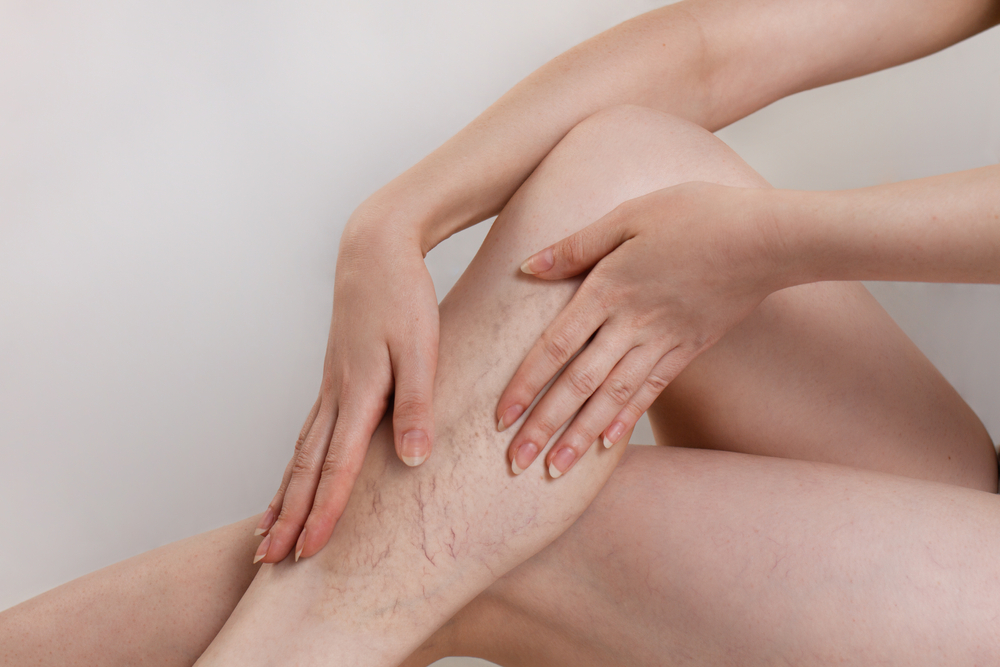Countless people experience leaky veins in their legs, especially as they get older or through certain seasons of life. Perhaps you inherited vein-related issues from your parents or are dealing with the residual effects of an old injury. Either way, if you’re living with symptoms of leaky leg veins, you’re not alone — and there are many things you can do about it.
What Are Leaky Veins? Understanding Chronic Venous Insufficiency (CVI)
Chronic venous insufficiency (CVI), or leaky veins in the legs, occurs when leg veins fail to effectively pump blood back to the heart, much like how the Panama Canal relies on a series of locks to manage water flow and elevation. When the one-way valves in these veins malfunction or the vein walls weaken, blood can pool in the legs.
The walls of veins are thin and less muscular than those of arteries, which helps them stretch and hold different amounts of blood. However, this thinness also makes veins more prone to conditions like CVI.
Recognizing the Symptoms: From Discomfort to Serious Signs
When you have chronic venous insufficiency that’s causing leaky veins, you might experience a number of symptoms, such as:
- Swelling in the legs, ankles, or feet
- Aching or throbbing sensations in the legs
- Feeling of heaviness or tiredness in the legs
- Visible varicose veins or spider veins
- Itching or burning sensations in the legs
- Skin discoloration, such as redness or brownish patches
- Leg cramps, especially at night
- Restless legs syndrome, which can make it harder to sleep or relax
- Ulcers or sores on the legs, particularly around the ankles
- Changes in skin texture, such as dryness or thickening
The severity and frequency of symptoms can vary. While some people have mild symptoms, others have vein problems that are indicative of more serious vein disease.
Understanding the Causes: Why Vein Valves Fail
Chronic venous insufficiency can occur for many different reasons:
Primary Causes
- Age: Aging causes vein walls to lose elasticity and become more susceptible to damage.
- Genetics: Some people inherit weaker vein walls or valve structures.
- Gender: Women are more likely to develop leaky vein valves in their legs due to hormonal influences, especially during pregnancy and menopause.
Secondary Causes
- Obesity
- Sedentary lifestyle
- History of previous blood clots
- Standing or sitting for long periods
- Smoking
- High blood pressure
How Leaky Veins Are Diagnosed
Diagnosis of chronic venous insufficiency typically involves:
Physical Examination
- Visual inspection of legs for swelling and skin changes
- Assessment of visible veins and circulation
- Evaluation of pulse strength in the legs and feet
- Testing for signs of swelling and skin changes
Medical History Review
- Family history of vein problems
- Previous blood clots or vein treatments
- Pregnancy history
- Occupation and lifestyle factors
Diagnostic Tests
- Duplex ultrasound examines the structure of the veins in your legs and how blood flows through them. It measures the speed of blood flow and identifies its direction, helping detect abnormalities like blockages or reverse flow.
Treatment Options: Finding Relief and Solutions
Managing leaky valves in veins often first involves lifestyle changes, including simple self-care techniques you can incorporate into your routine to help with discomfort and improve blood flow.
Treatment for leaky veins in legs often begins with conservative approaches. If these don’t help, medical treatments are available.
Conservative Management
- Wear compression stockings
- Regular walking and leg-strengthening exercises to improve circulation
- Reducing pressure on veins through healthy weight maintenance
- Elevate the legs above heart level when resting, especially at night
- Maintain healthy skin to prevent complications
- Avoiding prolonged sitting or standing
Medical Treatments
At Empire Vein & Vascular Specialists, we perform vein procedures in the comfort of our office, only requiring local anesthesia, including:
- VenaSeal™: A permanent solution for varicose veins that works by injection of a medical-grade adhesive that closes off the affected veins, and the blood is then rerouted to healthy veins.
- ClosureFast™: A solution that uses patented radiofrequency ablation (microwaves) to deliver uniform heat to treat and close affected veins and the blood is then rerouted to healthy veins.
- Sclerotherapy: A treatment for spider veins where an injection of a liquid compound is introduced directly into the veins, causing the veins to become absorbed by the body and the blood is then rerouted to healthy veins.
Each treatment offers unique benefits. Your vascular specialist will recommend the best approach based on your needs.
When to See a Vascular Specialist
You should see a vascular specialist if you experience:
- Persistent leg swelling or pain that doesn’t improve with self-care
- Skin changes around your ankles, such as discoloration or hardening
- Varicose veins causing discomfort
- Nonhealing wounds on your legs, especially near the ankles
- Significant leg fatigue or heaviness affecting daily activities
- Signs of infection, including warmth, redness, or tenderness
- A sudden increase in swelling or pain
To learn more about chronic venous insufficiency, schedule a free consultation at Empire Vein & Vascular Specialists. We’re the top provider of VenaSeal™, the leading outpatient varicose vein treatment in the USA.
To schedule a free consultation with our team of board-certified vascular surgeons, please call 1-800-827-4267 today.
